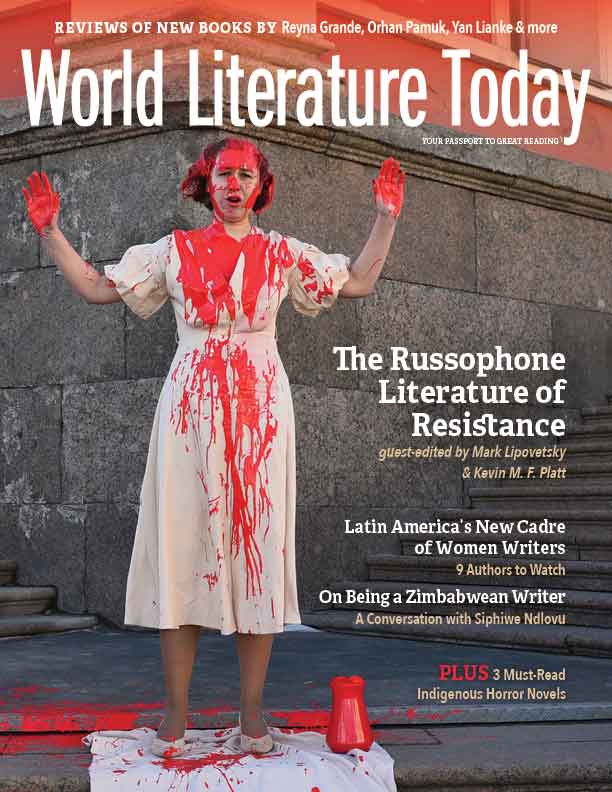The Rhino’s Testimony
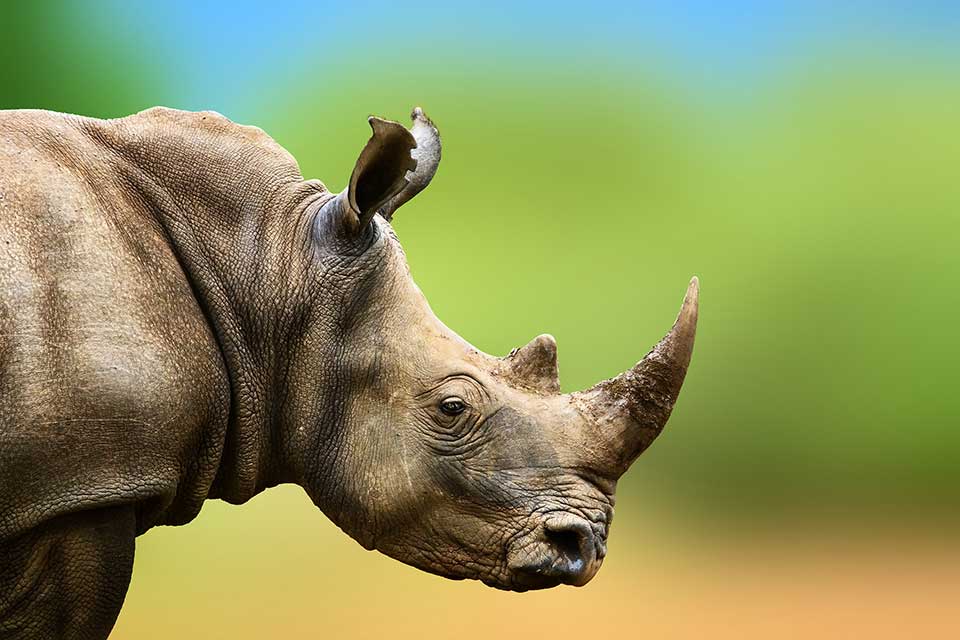
Bridget Pitt, author of the novel Eye Brother Horn, reflects on how South Africa’s colonial history, and the entanglement of nature conservation with social inequality and violence, means that many efforts to connect with or save nature are embedded in a system of wealth production that is driving its destruction—particularly that of the rhino.
Every day, at least one rhino is killed for its horn in South Africa. Rhinos in the Kruger National Park have declined by 60 percent in the last decade.[1] Often, the horn and half the face are hacked off while the rhino is still alive. It is hard to countenance such cruelty, and natural to blame the poachers who shoot them, and all those linked to the illicit rhino horn trade that feeds the market in east Asia. But a rhino slain for its horn tells a story of violence, greed, and dispossession that ripples far beyond the poacher’s bullet and goes back centuries: when I set out to write a novel about rhino-poaching, it became a novel about colonialism.
When the British colonizers first arrived in modern-day KwaZulu-Natal early in the nineteenth century, they found what they considered “virgin territory”: sprawling coastal and inland forests and lush grasslands teeming with antelope. Vast elephant herds migrated up and down the coast, creating pathways that today are three-lane highways roaring with traffic. Lions, leopards, and rhinos were frequently seen around Durban.
The land had in fact been occupied by humans for millennia, first by the San, and later Nguni tribes moving down from the north. The San were nomadic hunter-gatherers with a light footprint, but the Nguni people, who had been living there for at least four hundred years, cultivated crops and herded cattle, impacting the land in several ways. They burned pastures to improve grazing for their livestock, cleared land for crops, and burned wood for smelting iron and cooking. They hunted animals and harvested wild plants for food, clothing, shelter, and medicine. But their impact was minimal compared to what happened in the years that followed.[2]
By the end of the nineteenth century, the landscape was fundamentally transformed. No elephant, lion, or rhino could be found south of the Pongola River and the buffalo and antelope herds were decimated. Coastal forests and grasslands had been mowed down for sugar cane, and inland forests denuded of canopy trees to build wagons, ships, and homes. The human landscape was also irrevocably transformed: the power of the Zulu king broken, the chiefs brought into subjugation under British authority. From being self-sufficient farmers, the local people were now forced by the hut tax and loss of land to labor for minimal wages on British-owned farms or in British-owned mines. In 1870 the British in Natal numbered fifteen hundred compared to over fifty thousand indigenous people. How had a relatively small number of people had such an impact?
The simple answer is guns. Guns were used without restraint against the wildlife, and, while initial relations with the indigenous people were based more on cooperation than force, as the colony became more established, guns were used to help subjugate the indigenous population through force or inducement. When the neighboring sovereign Zulu nation became an obstacle to expansion, the British invaded their kingdom and overcame their armies with its superior firepower. Zululand was carved up for white settlers, and the royal house brought under British rule.
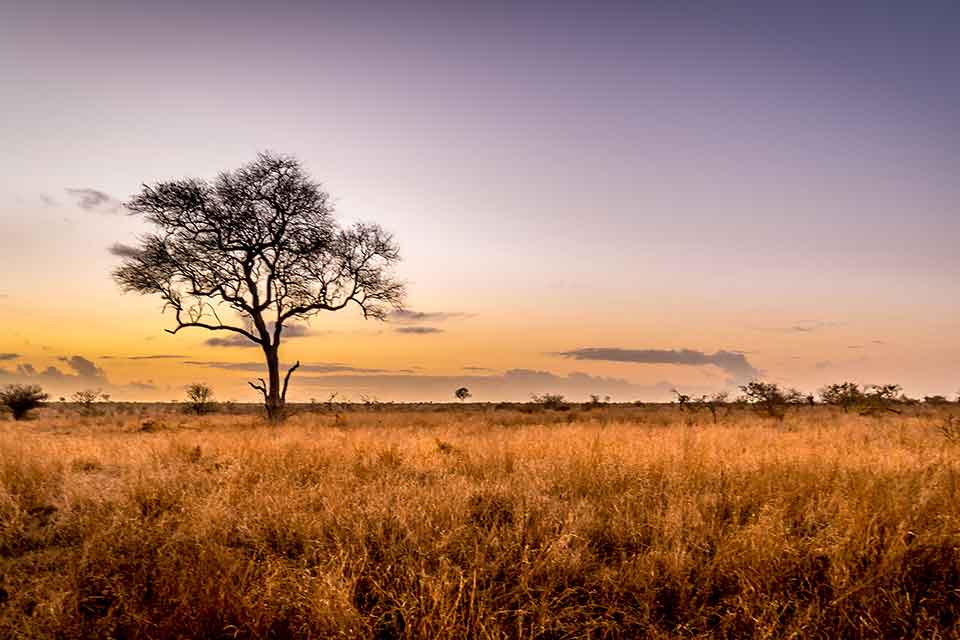
The real driver of transformation was the violence that flowed from a hierarchical concept of the world.
But guns were just the tools. The real driver of transformation was the violence that flowed from a hierarchical concept of the world. Human exceptionalism governed colonial attitudes to nature, but also to black people, as they were considered less than human in order to justify slavery and—after abolition—enforced labor, impoverishment, and theft of land. The San Bushmen were so brutally dehumanized that until 1936 it was permissible to hunt them—many people still living today were alive when the last permit was issued in Namibia[3]. As the colony expanded, racist attitudes equating blackness with beastliness became entrenched, disrupting the relationship to wildlife in the indigenous community. Several Nguni clans are named after totem animals (e.g., Ngwenya, meaning crocodile; Ndlovu, meaning elephant), and positive animal qualities are ascribed to people in clan praise songs. But, indoctrinated by the colonizers to believe that association with animals was a sign of “savagery” and a source of shame, many came to repudiate it. Indigenous people were further alienated from the natural world by the theft of their land and by efforts to crush their beliefs and values.
Armed with a mindset of entitlement, the colonizers commodified all that walked or grew in the territory under their control. Sugar cane and other cash crops turned a profit from the land; forests were monetized by razing canopy trees to build wagons, ships, and homes. Humans were monetized through taxes and increasingly draconian labor conditions.
Wild animals were a major source of revenue. Between 1844 and 1874, nine hundred thousand kilograms of ivory (representing about eight thousand dead elephants), over two million pelts, and nineteen thousand kilograms of rhino horn left the port of Durban.[4] Live animals were captured and sold to European zoos. Animals were also massacred for amusement, or to prove “manliness”; John Dunn boasts of shooting twenty-three hippos in a morning.[5] In time, this too was monetized through hunting licenses. Only the wealthy and well-connected could afford the right to hunt certain animals, but settlers were paid bounties for killing “vermin”: leopards, jackals, wild dogs, and other predators. The British radically disrupted the way indigenous people hunted, which had been for subsistence or cultural needs and limited by strict cultural mores. Now they were induced to hunt, or to help Europeans to hunt, for payment in cash or kind, and to kill animals on an unprecedented scale.
Early efforts at conservation did not spring from an altruistic desire to preserve wildlife, but flowed from the same sense of entitlement, as authorities realized that this lucrative resource was rapidly diminishing. Thus the “game park” was born: an enclosed area offering hunting opportunities to the wealthy for sport. Suitable land was found in what had been legendary Zulu leader King Shaka’s hunting grounds, leading to the formation of the Mfolozi Park in 1895. The Kruger National Park was proclaimed in the Northeast in 1926. People living in these territories were summarily evicted from ancestral land, in violent acts of dispossession. Fences went up, alienating people from lands they had walked through freely. Those who continued to hunt animals for subsistence or traditional medicine were criminalized as poachers and dealt with harshly.
As the tourism industry developed, the reserves became less about hunting and more about conservation, but racism, violence and commodification continued to shape the sector. As the Great White Hunter of the imperial British imagination gave way to the Great White Savior of wildlife, black people were not only physically removed but also excluded from meaningful engagement in the reserves. Cultural practices and knowledge that had enabled local populations to live for centuries without destroying the wildlife and the land were dismissed as unscientific. White conservationists relied heavily on the knowledge of black rangers and trackers, but their contribution was rarely acknowledged, and black employees were paid minimal wages for highly skilled work. They are still underrepresented in management and professional roles in conservation to this day.
Revenue generated by the reserves through high-end tourism seldom trickles down beyond a handful of the well-connected.
This exclusion is starkly evident on the roads to the Hluhluwe-Mfolozi Park and the Kruger, which travel through communities steeped in rural poverty. Revenue generated by the reserves through high-end tourism seldom trickles down beyond a handful of the well-connected. Most people living alongside these parks have never been inside the gates, never seen a lion, rhino, or elephant in the wild, never had the opportunity for any real connection. Many have come to see conservation as a “white” thing and believe with some justification that the concern for the plight of the rhino amongst white people far outweighs concern for the plight of their fellow black citizens. There have been some overdue efforts to make the reserves more accessible and to widen the community share in the revenue. But this is not enough to redress generational dispossession, and poverty remains rife. The unemployment for the under thirty-fives is 50 percent. So when a young person with neither income nor prospects is offered $5,000 to kill a rhino, it is a tempting proposition.
Reserves are under constant pressure to generate revenue, and wildlife is commodified through direct trade in animals, the sale of licenses for trophy hunting, or selling the spectacle of animals in the wild. Tourists are drawn with promises of sighting the “big five,” and rangers are expected to curate their visits to ensure that this happens. Raised to be consumers in a profit-driven world, visitors tick off the animals they have spotted on lists, post shots on Instagram, and fly home with little real contact. A conservation model relying on foreign tourism also has a massive carbon footprint. The irony of flying halfway across the world to photograph a rhino, while threatening its future existence with the carbon generated by the flight, cannot be ignored.
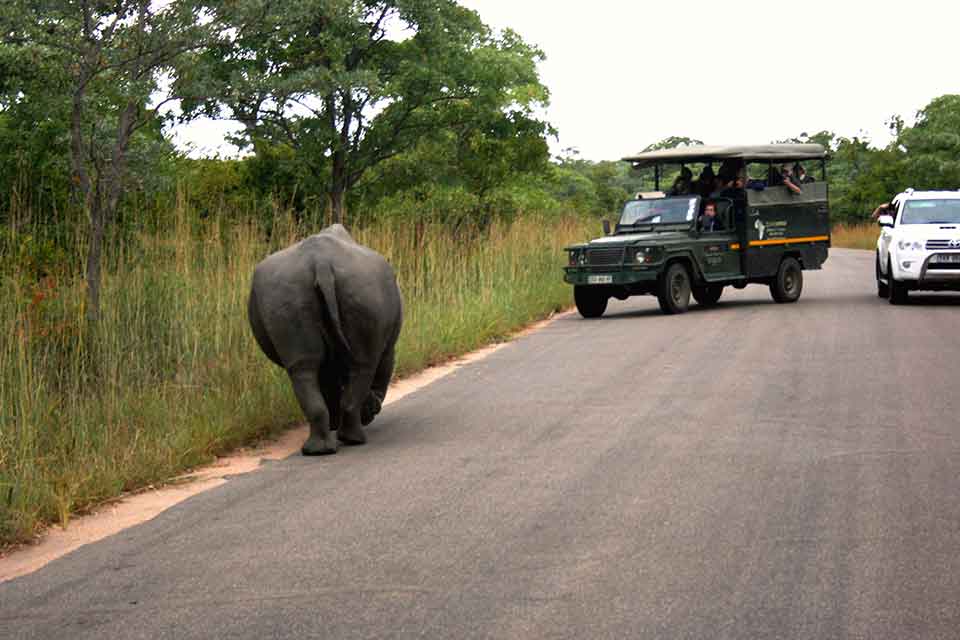
The irony of flying halfway across the world to photograph a rhino, while threatening its future existence with the carbon generated by the flight, cannot be ignored.
The slaughter of rhinos is driven by the commodification of rhino horn. Despite it having no more health benefits than chewing your fingernails, a traditional belief in its medicinal powers was revived to create a market amongst the emerging wealthy elite in Vietnam and China, and it rapidly became a highly prized status symbol, worth more than gold.[6] As the market exploded, so did the killing: thirteen rhinos were killed in 2007, escalating to 1,215 in 2014. The numbers of rhinos killed have dropped, but so have the numbers of rhinos on the ground. As the poaching intensifies, so does the violence, with both rangers and poachers dying. Some rangers shoot poachers on sight because they know that convictions are rare, thanks to corrupt or incompetent law enforcement and judiciary. Security technocrats oversee militarized operations at the reserves, costing the state or private owners billions in revenue. Criminal poaching syndicates bring extortion, corruption, and violence to local communities. Some are pushing to legalize the sale of rhino horn to “flood the market” and drive down demand. But this had the opposite effect when it was tried with ivory,[7] and the potential market for rhino horn massively exceeds the numbers of rhinos. Efforts to stop the poaching are stuck on this treadmill of violence and commodification, and every day more rhinos die.
This is not to discredit the passion and dedication of those in the conservation sector, who have sacrificed much, even their lives, to protect rhinos and other animals. Like Anton Mzimba, a head ranger at a private game reserve, who was gunned down by poachers in July this year.[8] And most visitors to the reserves are motivated by a deep yearning for authentic contact with the wilderness. But our colonial history, and the entanglement of nature conservation with social inequality and violence, means that many efforts to connect with or save nature are embedded in a system of wealth production that is driving its destruction.
It is a heart-breaking and bleak situation, with no easy answers. But we need to keep our gaze on the rhino’s shattered face, however uncomfortable that may be, and listen to what it tells us about violence and historical woundedness: about how our efforts to commodify and exploit nature in the name of profit are destroying all life on earth, animal and human; about how the violence done to our environment is inseparable from violence done to humans, and we cannot save nature if we cannot save each other.
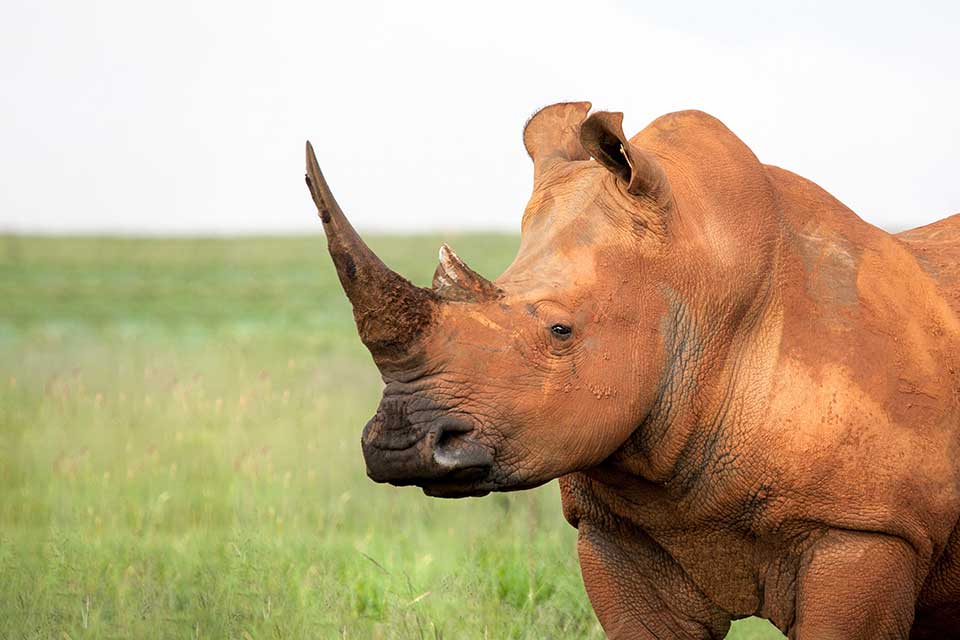
We cannot save nature if we cannot save each other.
We need to listen to these words of Sabelo Msweli: I cannot describe the pain I felt, it was like losing my own family members. Msweli did not grieve for the rhinos because of the tourist dollars their death might lose, but because he recognized them as kin. Recognizing animals as our kin has been dismissed as sentimentalism by conservationists. But, with animals now going extinct one hundred times faster than in the last ten million years,[9] and climate chaos looming, we need a radical shift in our relationship with nature. Even scientists are turning to ideas like kinship to explore nonhierarchical relations with nonhuman animals and working with indigenous philosophies to guide our path to a more convivial way of living with both our human and nonhuman kin.
Open your eyes, the rhino tells us, and see me for what I am: not a tourist dollar, nor a status symbol, but a fellow creature. My testimony is a warning and a promise. A warning of what will happen if humans do not change, a promise of a new kinship with the earth if they do.
Let us pay heed to the rhino’s testimony, before its time, and ours, is gone.
Cape Town
Editorial note: Read a review of Eye Brother Horn from this same issue.
[1] Save the Rhino: https://www.savetherhino.org/rhino-info/poaching-stats/.
[2] Ellis, Beverley. The impact of the white settlers on the natural environment of Natal, 1845-1870. Masters Thesis, University of Kwazulu-Natal 1998: https://researchspace.ukzn.ac.za/handle/10413/5835.
[3] UNHCR Chronology of San Bushmen in Namibia: https://www.refworld.org/docid/469f38c1e.html.
[4] McCracken, Donal P. Saving the Zululand Wilderness, Jacana Media, South Africa 2008, page 28.
[5] Ibid page 18.
[6] William J. Ripple et al, Collapse of the world’s largest herbivores: Science Advances Vol. 1, No. 4, https://www.science.org/doi/10.1126/sciadv.1400103.
[7] Sipho Kings, “Legal ivory trade led to sharp rise in poaching,” Mail & Guardian 17 June 2016: https://mg.co.za/article/2016-06-17-00-legal-ivory-trade-led-to-sharp-r….
[8] Rachel Nuwer, “Killing of Ranger Protecting Rhinos Raises Fears for Conservation Efforts,” New York Times Aug. 16, 2022: https://www.nytimes.com/2022/08/16/science/poaching-ranger-murder-rhino.html.
[9] Species Extinction Rate Hundreds of Times Higher Than in Past 10 Million Years, UN Secretary-General António Guterres’s message on the International Day for Biological Diversity, 22 May 2022: https://press.un.org/en/2022/sgsm21291.doc.htm.











